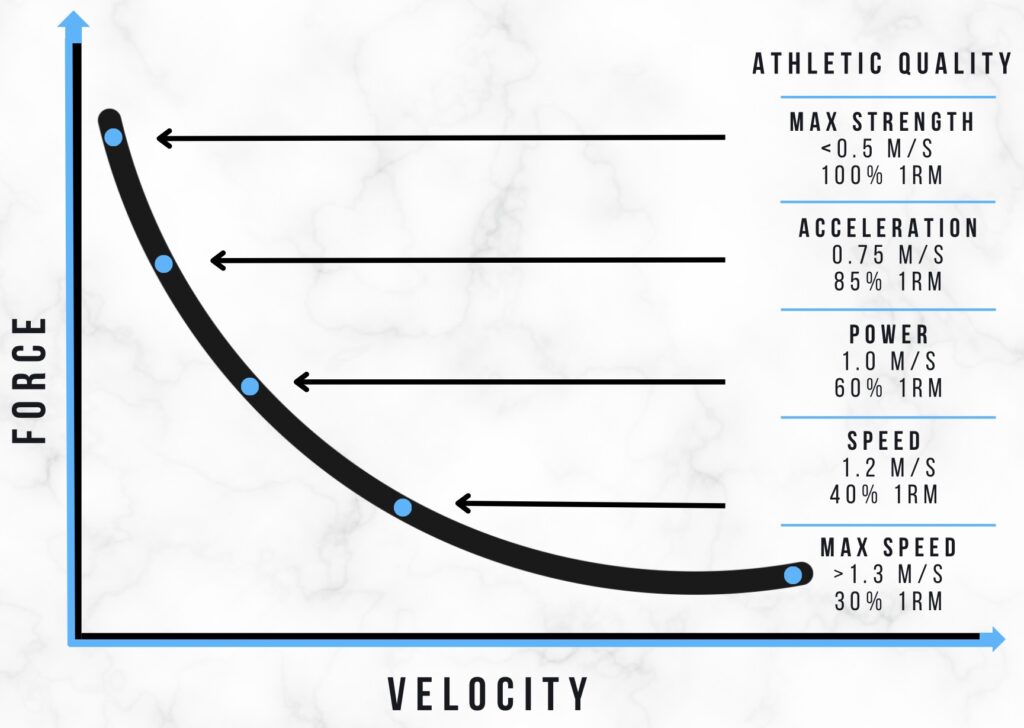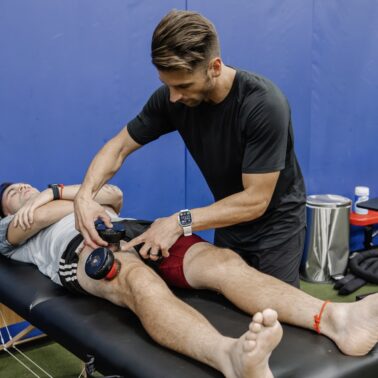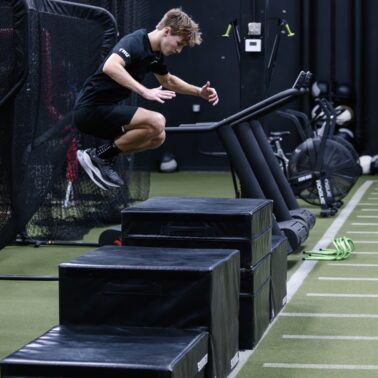“Isokinetic training allows for extreme manipulation of the force-velocity curve to increase specificity of training or rehab adaptations.”
Adam Loiacono
What You will learn
- The resurgence of isokinetic testing and it’s importance.
- How to use testing data to guide decision making for programming.
- Advice on appropriate progressions backed by research.
Understanding Isokinetic Exercise
Isokinetic exercise is a form of resistance training that maintains a constant speed throughout the entire range of motion, regardless of the amount of force the individual exerts. This is achieved through specialized equipment that adjusts resistance in response to the user’s effort, ensuring that the speed of the movement remains consistent. The primary benefit of isokinetic exercise is its ability to provide maximal resistance throughout the whole range of motion, offering a comprehensive workout to the targeted muscles.
Isokinetic vs. Isometric Exercise
While both isokinetic and isometric exercises are forms of resistance training, they differ significantly in their approach:
- Isokinetic Exercise: Involves movement against resistance at a constant speed. The resistance varies to maintain the speed constant throughout the range of motion.
- Isometric Exercise: Involves exerting force against an immovable object or resistance, with no change in muscle length or joint angle. It’s static, with the muscle maintaining a constant length throughout the contraction.
The key difference lies in the dynamic nature of isokinetic exercise, which involves movement and varying resistance, compared to the static nature of isometric exercise.
The Relationship Between Force and Velocity
In isokinetic exercise, the relationship between force and velocity is a critical component. Generally, as the velocity of the exercise increases, the force that can be generated decreases. This inverse relationship is crucial for tailoring training and rehabilitation programs. For example, lower velocities are often used for building muscle strength, while higher velocities are better for improving muscle endurance and power.

Isokinetic Testing Technologies: HUMAC Norm and 1080 Quantum Synchro
Advancements in technology have led to the development of sophisticated equipment for isokinetic testing, such as the HUMAC Norm and the 1080 Quantum Synchro. These devices are instrumental in assessing muscular strength and endurance, providing valuable data for athletes, coaches, and physical therapists.
- HUMAC Norm: This system is widely used for measuring the strength of various muscle groups. It’s particularly renowned for its accuracy in assessing the strength of the quadriceps and hamstrings, two critical muscle groups for many athletes. The HUMAC Norm provides detailed feedback on muscle performance, including peak torque, total work, and endurance, making it an essential tool for injury rehabilitation and performance enhancement.

- 1080 Quantum Synchro: A newer technology in the field, this device stands out for its versatility and the ability to test muscles under more dynamic and sport-specific conditions. It offers a range of speeds and resistance levels, enabling more comprehensive testing and training scenarios. This adaptability makes it particularly useful for athletes involved in sports requiring a combination of strength, speed, and endurance. The image below displays a Smith machine attached to (2) Quantum units that provide the isokinetic resistance.

Isokinetic Testing Parameters
In isokinetic testing, the speed of the movement is kept constant, and the resistance offered by the equipment varies to match the force exerted by the individual. Different speeds, measured in degrees per second (°/s), are used to assess various aspects of muscle function. The differences in testing at 30°/s, 60°/s, 180°/s, and 300°/s are significant in understanding muscle performance:
- 30 degrees/second (°/s): This very slow speed primarily focuses on maximum strength output. It’s often used for testing and rehabilitation of injured muscles where high force is necessary but high speed might be harmful. It allows for the assessment of peak torque and the endurance capacity of muscles. This speed is also beneficial for those who are in the early stages of rehab or have significant muscle weakness.
- 60 degrees/second (°/s): A moderate speed that is commonly used in clinical settings. It strikes a balance between strength and the muscle’s ability to produce force quickly. At this speed, both the strength and the endurance of the muscle can be assessed effectively. It is suitable for most populations, including those in later stages of rehabilitation or general strength assessment.
- 180 degrees/second (°/s): This speed starts to focus more on the muscle’s power and its ability to produce force rapidly. It’s often used in sports medicine to assess athletic performance, as it’s more representative of the speed of muscle contraction in many sports. At this speed, the assessment moves away from pure strength and begins to incorporate elements of the muscle’s speed and endurance capabilities.
- 300 degrees/second (°/s): This very high speed is primarily used to assess muscular endurance and the ability of muscles to contract quickly. It’s particularly relevant in high-speed sports where rapid muscle contractions are essential. Testing at this speed is less about maximum strength and more about the muscle’s ability to sustain repeated, fast contractions over time.
Each speed setting in isokinetic testing offers distinct insights into muscle function and performance. Lower speeds are more relevant for maximum strength and rehabilitation, while higher speeds are crucial for assessing muscle endurance and speed, especially in athletic contexts. For references into normative data that highlight what your target goals should be, be sure to check out this website for all of your normative isokinetic data.
Isokinetic = Parts, Velocity Based Training = System
Although isokinetic testing is represented as degrees/second, the principles of the force-velocity curve from velocity based training (VBT) are the same. Slower speeds are biased towards maximal force production and faster speeds are biased towards endurance and power. From VBT, Absolute Strength is 0.3 – 0.5 m/s and in isokientic 30-60 degrees/second is Absolute Strength.
When programming rehab or training, we can easily sync up the part-task and whole task training strategies to be training along the same continuum of force and velocity. Let’s use a simple case study of post-operative ACL-reconstruction surgery.
In months 3-6 of the rehab process, the primary goal is building absolute strength. We can measure the ‘part’ – the knee – and we can measure the ‘system’ – total body – with both isokinetics and velocity based training. More specifically, we will do slow speed knee extensions to train the part and slow speed squats to train the system. If we can train on an isokinetic machine like a HUMAC, then in this phase we would train at 30 – 60 degrees/second. If we have access to a GymAware or other VBT equipment, then we would train the squat within the 0.3 – 0.5 m/s.
In months 6-9 of the rehab process we would simply progress both modalities by increasing the speed. The iskokinetic would increase to approximately 180 degrees/second and the VBT to 0.75 – 1.0 m/s. In months 9 and beyond we would train at faster speeds – 300 degrees/seconds and > 1.0 m/s – to develop both power and rate of force of development (RFD).
Conclusion
Isokinetic exercise, facilitated by cutting-edge technology like the HUMAC Norm and the 1080 Quantum Synchro, offers a unique and effective way to assess and improve muscular strength and endurance. By understanding the principles behind isokinetic exercise and incorporating specific exercises into training routines, athletes and individuals can significantly enhance their performance and reduce the risk of injury. Whether for rehabilitation, training, or general fitness, isokinetic exercise is a valuable tool for improving athletic performance.



